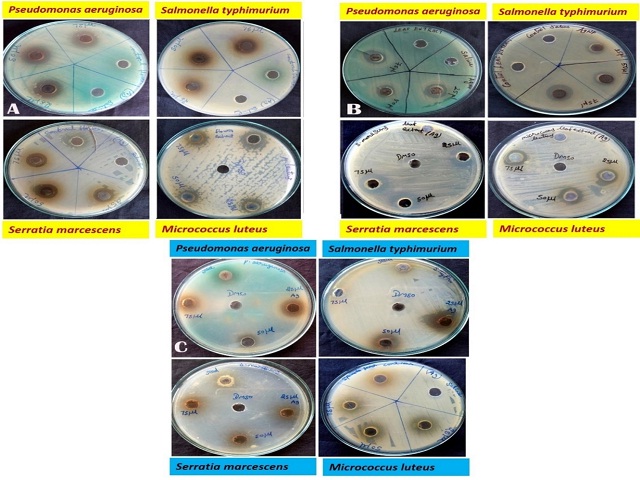Green mediated synthesis of silver nanoparticles using Ipomoea quamoclit to explore the potential antimicrobial activity against human pathogens
DOI:
https://doi.org/10.5530/ctbp.2021.3s.42Keywords:
Nanoparticles, Ipomoea quamoclit, Antibiofilm, Antimicrobial, Human pathogensAbstract
Ipomoea quamoclit, a medicinal plant, known as a common medication for stomach ache, hemorrhoids and rheumatoid arthritis, has been employed for the biosynthesis of silver nanoparticles in the current study. The phytochemical analysis of this plant revealed that it is rich in phenolics, flavonoids, steroids, saponins, carbohydrates, triterpenes compounds. The present study has demonstrated an ecofriendly and safer method for developing a simple and cost effective production of silver nanoparticles using Ipomoea quamoclit flowers, leaves and seeds. The formation of nanoparticles was supported by color change and UV-Vis spectroscopy, showed maximum absorption peak at the range of 400-450 nm. X-ray diffraction, Fourier transform-Infrared spectroscopy and Scanning electron microscope, demonstrated spherical and oval shaped nanoparticles in the sizes ranging between 25 and 45 nm. The phytosynthesized silver nanoparticles have shown a remarkable antimicrobial activity against tested gram negative and gram positive pathogenic organisms such as Pseudomonas aeruginosa PAO1, Salmonella typhimurium, Serratia marcescens and Micrococcus luteus by conventional agar well diffusion in a dose dependent manner. The observations of the present investigation appear to be promising and offer a valuable agent for antimicrobial and antibiofilm activities. Among the various nanoparticles, the silver nanoparticles synthesized using the flower extract of Ipomoea quamoclit had a notably marked reduction in biofilm formation against Salmonella typhimurium. This paves the way in designing a new alternative therapeutic management of biofilm associated infections in future.



